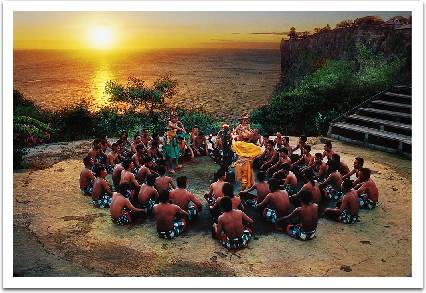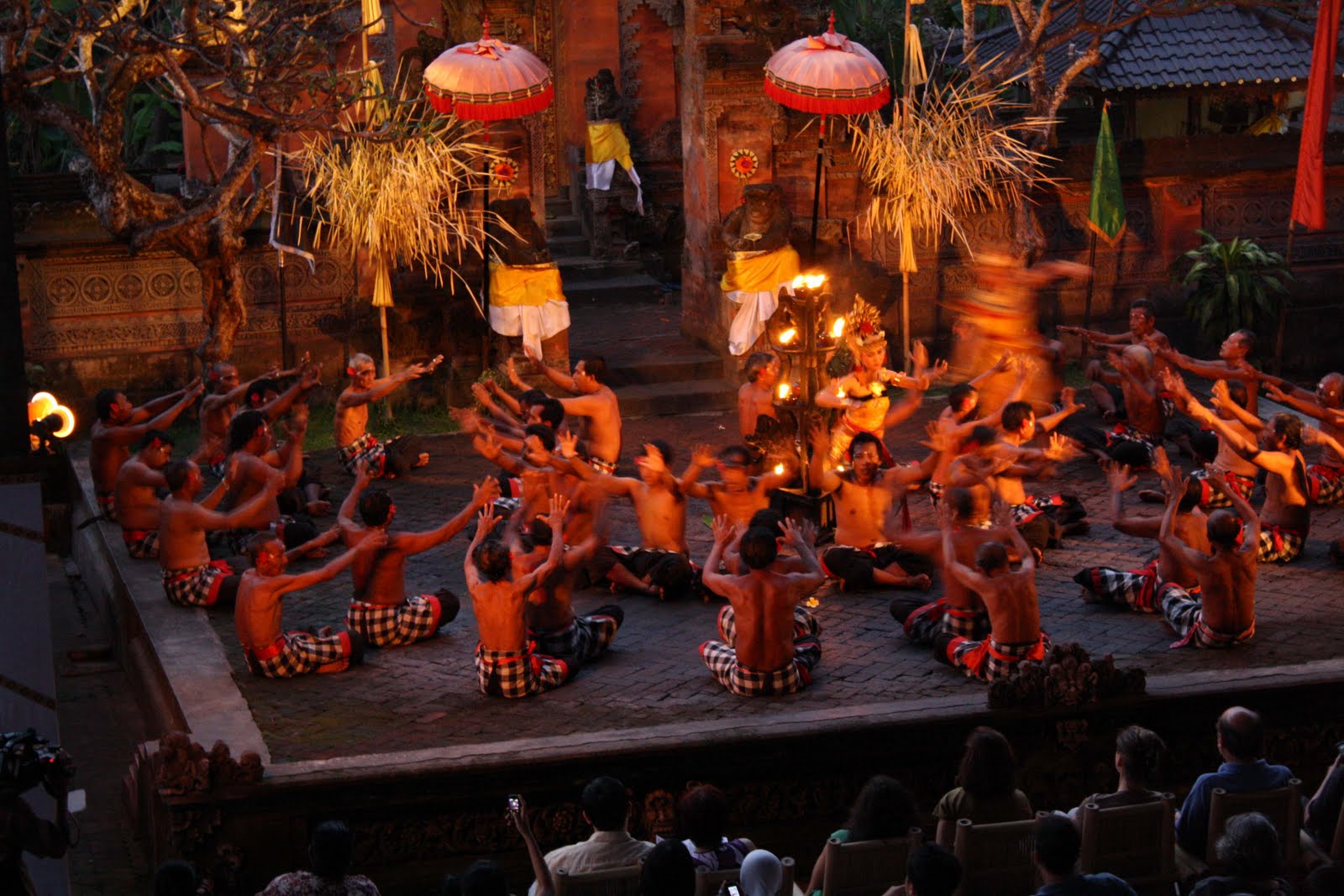The magical Balinese Kecak Dance
Balinese Kecak dance is the creation of a famous Balinese dancer I Wayan Limbak, and a German painter, Walter Spies, in the 1930s. At first, these two artists fascinated by the ritual dance in which the dancers dancing in conditions possessed by the spirit (trance).
The Trance Balinese ritual itself is derived from pre-Hindu tradition of dance, were dancers will be in an unconscious condition, communicating with God or the spirits of the ancestors and then convey their expectations to the community. Kecak dance is very unique because it does not rely on musical instruments to accompany the dance, but the chorus dancers.
The Trance Balinese ritual itself is derived from pre-Hindu tradition of dance, were dancers will be in an unconscious condition, communicating with God or the spirits of the ancestors and then convey their expectations to the community. Kecak dance is very unique because it does not rely on musical instruments to accompany the dance, but the chorus dancers.
Rhythm sound "cak, cak, cak ..." were arranged in such a way as to produce an alloy that is very harmonious, interspersed with a few accents and other utterances.
The dancers who rang the sound "cak, cak, cak ..." are usually bare-chested and wearing only a plaid fabric like a chessboard that encircled their waists. While the figures of Rama, Sinta, Ravana, Hanuman, Sugriva and dressed like a general on ketoprak show.
The dancers who rang the sound "cak, cak, cak ..." are usually bare-chested and wearing only a plaid fabric like a chessboard that encircled their waists. While the figures of Rama, Sinta, Ravana, Hanuman, Sugriva and dressed like a general on ketoprak show.
In this dance, rhythm sounds spoken by the dancers are enough to bring a mystical aura to the audience. Especially after the story of Ramayana in a dance performed is completed, the show spliced with Dedari Trance and the Jaran Trance dance are believed to be possessed by the spirit of the dancers refined, so invulnerable when dancing on hot coals.
This dancing is a dance to ward off the evil spirits performed by two girls who are still virgins. While Sanghyang Jaran is a dance performed by men possessed which pranced like a horse's behavior and dancing on hot coals. Because the hallmark of this Jaran Trance Dance, Kecak is also known as the Kecak and Fire Dance.
This dancing is a dance to ward off the evil spirits performed by two girls who are still virgins. While Sanghyang Jaran is a dance performed by men possessed which pranced like a horse's behavior and dancing on hot coals. Because the hallmark of this Jaran Trance Dance, Kecak is also known as the Kecak and Fire Dance.
Kecak dance is played by a number of dancers (mostly men), between 50 to 150 people, with a duration between 45-60 minutes. This dance is compose vocal instrument of the dancers (acappella) with the sound "cak, cak, cak ..." as he raised both arms to accompany the epic Ramayana story that became the main story in this dance.
Therefore the spoken chorus dancers are considered similar to the sound a monkey, then the foreign tourists often refer to this dance as "Mongkey Dance".
Therefore the spoken chorus dancers are considered similar to the sound a monkey, then the foreign tourists often refer to this dance as "Mongkey Dance".
Travelers who are interested in watching Kecak can choose one among the three locations show, the first is at Pura Luhur Uluwatu, Batubulan village, and the last in Hanuman Road (in the Ubud area).
In Pura Luhur Uluwatu and Batubulan village, tourists can watch the Kecak Dance performances every day starting at 18.00/18.30 pm. Meanwhile, in Ubud Kecak Dance performances held every Tuesday, Thursday, and Friday at 19.00 pm.
In Pura Luhur Uluwatu and Batubulan village, tourists can watch the Kecak Dance performances every day starting at 18.00/18.30 pm. Meanwhile, in Ubud Kecak Dance performances held every Tuesday, Thursday, and Friday at 19.00 pm.
Kecak Dance at Uluwatu staging is the most interesting to watch. Pura Uluwatu is a temple which is rich in historical value and the value of magical. This temple is so incredible, standing on a cliff with a height of about 97 meters in the middle of the Indian Ocean blow.
Uluwatu is known as a great place to surf and spend time at the beach. Kecak Dance Performance starts at 18:00 or just before Sunset. The show took the Ramayana story with main characters like Rama, Shinta, and several prominent Rawana clown-servants with the funny acting, could refresh the atmosphere.
Uluwatu is known as a great place to surf and spend time at the beach. Kecak Dance Performance starts at 18:00 or just before Sunset. The show took the Ramayana story with main characters like Rama, Shinta, and several prominent Rawana clown-servants with the funny acting, could refresh the atmosphere.

